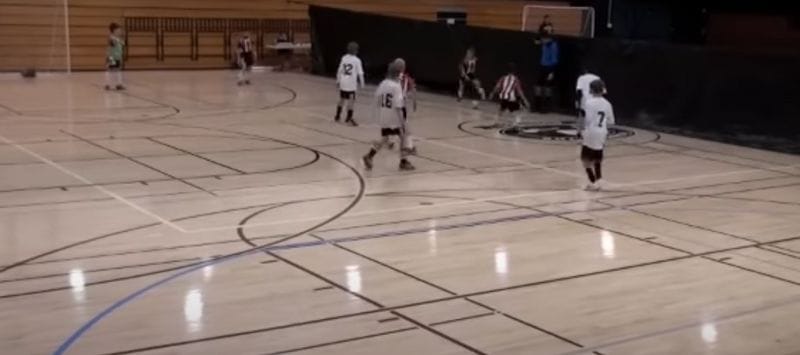Physical Address
304 North Cardinal St.
Dorchester Center, MA 02124
Physical Address
304 North Cardinal St.
Dorchester Center, MA 02124

Futsal is a variation of football or soccer which is played indoors. It is played byten players in total , of whom two are goalkeepers. The players use a small ball and the aim is to score goals against the opponent just like in soccer. Since it is played indoors on a hard surface,the ball has less bounce than the one in normal football.
Futsal was created in 1930 by Juan Carlos Ceriani of Uruguay. He intended it to be an indoor recreational game for YMCAs. In 1933, he wrote a rule book on futsal in which he combined rules extracted from games like basketball, water polo and handball.
Oliveira Fernandes together with Habib Maphuz,changed these rules later so that older people could compete. The result was “Book of Rules of Futsal” published the same year and adopted at international level.
The popularity of Futsal in Latin America is credited to José Antonio who coined futsal to describe the game.
The four players from each team dribble, pass and kick a small ball with the aim of advancing it past the opponent’s goal. Teams are allowed unlimited substitutions during play.
It is played by a minimum of five players and a maximum of twelve in each game. The field measures 28 by 15m long. It is played with a size four soccer ball. It takes 40 minutes-20 actual minutes each with a rest of 15 minutes. A coin is tossed to determine the team to set the ball rolling in the match.
Just like in football, players can use any part of their bodies apart from hands and arms to dribble or kick the ball. However,the goalkeeper can touch the ball with the hands. In such a case,the goalkeeper is only allowed to do so on his goalside.
In case the ball is off the pitch,the player who kicked it outside leaves it to their opponents. Instead of a throw-in,we have a kick-in. For a kick-in, the ball is placed on the field line and the player must kick it within 4 seconds after the referee’s whistle.
Offside rule is non existent. Players are allowed near their opponents goal compared to conventional football.
There is free kick if a foul is committed by an opponent while a penalty is given if a free- kick foul is committed within the penalty area.
After a score, kick off starts in the middle field. In some competitions, if at the end of regular time there is a tie in the score, extra time is awarded those that are the first to score become the winner. If after extra time there is no winner, the game resorts to penalties to determine the winner.
A foul is considered to have been committed if a player attempts to kick, push, strike or tries to trip another player. Holding, spitting at or interfering with the play of an opponent by touching them is also an offence. Sliding to get at a ball while the opponent has it, will have the referee blowing his whistle.All these fouls lead to direct free kick being awarded by the referee to the opposite team.
A goal keeper is not permitted to use his hands on the ball if his team member kicks it to him. The goal keeper is also not allowed to control the ball for a period of time exceeding 4 seconds. If he commits such fouls, the referee blows the whistle to stop the game for a free kick.
Yellow cards are issued to players who commit fouls.Two consecutive yellow cards to a single player warrant a red card which sents them from the pitch. Another player will take his place and should enter the field within two minutes after the teammate has been shown the red card.
Each game is officiated by three referees. The first referee ensures the rules of the game are adhered to and he also has powers to stop the game. The second referee assists the first referee by watching the goal line, field line and fouls. There is a third referee. There is also a time keeper. The two keep a written account of all fouls.